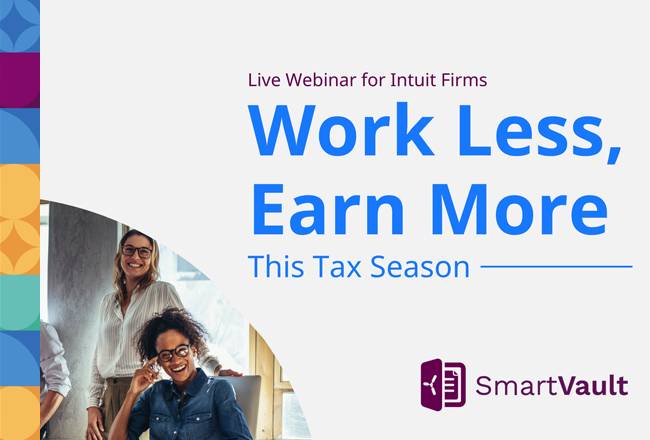
What Gig Workers Filing Taxes Need to Know
Guest Blog by: Carrie Stemke
How the Workforce Has Changed in 2022
The pandemic upended the ways people make money and shut down a number of industries for a year or more, leaving millions without jobs. It was also the catalyst for workers who had long been dissatisfied with the conditions at work to finally take action and look for ways to make positive changes that better suited them. The result? An unprecedented explosion in the gig economy.
In 2020, the number of workers participating in the gig economy grew 33%. “Gig economy” is the term for a labor market that relies on workers performing freelance, contract, or temporary services for a company rather than becoming traditional, full-time employees. There are myriad examples of what qualifies as a gig job: The driver who picks you up when you call an Uber or Lyft is a gig worker. So are freelance writers and editors, delivery drivers, dog walkers, professional consultants, and advertising professionals. “Adaptability” is a common buzzword accountants hear now from industry leaders talking about how to succeed in the new normal. One way to exhibit this quality is to keep an open mind when you have a client who says they’re a “gig worker”: Clearly, this term covers many professions.
The gig economy shows no signs of slowing down. As of 2022, nearly three-quarters of gig workers say they intend to continue this kind of employment through at least the next year. Some experts estimate over 90 million Americans will classify as gig workers by 2028. The reason? Independence, say the majority of gig workers. They value being their own boss over working for someone else full time, despite the loss of benefits.
The takeaway for tax professionals? You should absolutely expect many of your clientele will either have a side gig in addition to their regular job or will be supporting themselves doing freelance and contract work only.
Preparing for a New Type of Tax Season
You’re likely aware gig workers are subject to different tax rules and need to file different paperwork than those who have regular full-time positions. It’s unlikely, however, that you’ve weathered a tax season with so many clients who freelance in some capacity. By taking some proactive steps, you’ll be prepared for the new challenges you’ll face in the 2022 busy season and reduce stress – for yourself, your team, and your clients. There are two major areas you need to focus on to achieve this goal. First, familiarize yourself with the new tax rules for gig workers. Second, learn to work effectively with these kinds of clients.
Tax Rules for Gig Workers
As the gig economy grew, the IRS took notice and altered their regulations accordingly. As always, freelancers need to file estimated taxes using Form 1040-ES. These need to be paid at the end of each quarter:
- Payment 1 is due April 15 and covers the period from January 1 to March 31
- Payment 2 is due June 15 and covers the period from April 1 to May 31
- Payment 3 is due September 15 and covers the period from June 1 to August 31
- Payment 4 is due January 15 and covers the period from September 1 to December 31
Anyone who makes $400 or more from self-employment must file a tax return. The IRS can and will audit gig workers and is paying more attention to their tax returns than ever before. Stress the importance of following all the rules to your clients, and warn them that the government agency no longer overlooks payments made for freelancing and the selling of goods over online payment services like Venmo and PayPal. If they receive $600 or more for part-time work, a side gig, or goods sold over one of these platforms, they must report it to the IRS or face penalties.
How to Work Effectively with Self-Employed Clients
Driving Ubers, walking dogs, freelance writing, selling goods, getting sponsorships for TikToks: just thinking about trying to cobble together all the financial information necessary to file tax returns and help self-employed clients avoid audits and penalties is likely to give even the most seasoned tax pro a headache. Here are some ways to reduce stress now:
1. Make a list
First, figure out which clients will be filing taxes as gig workers this year. Whether they make all of their money this way or have a side gig selling knitted scarves on Etsy in addition to their regular job, they should go on your list of gig worker clients. Ask each client to let you know if they have any gig jobs, including freelancing and selling goods online. Even if they’re not sure the amount is taxable, they should let you know anyway. That way, you’ll be able to create a list of individuals who require a different, more tailored approach.
2. Make sure they’re informed and prepared
This is another task that can be accomplished by email. Make sure everyone on your self-employed client list gets an email explaining what constitutes gig work according to the IRS, letting them know the dates self-employment taxes are due (as well as which forms to fill out), and informing them of the importance of keeping records of the expenses and income. Include links to the IRS resource for managing taxes for gig work.
3. Identify potential problems and schedule meetings
One of the major advantages of sending out these emails now is the ability to identify clients who will likely have issues before tax season begins. It’s inevitable you’ll receive panicked emails from people who haven’t been paying estimated taxes, confusion about whether or not their online store qualifies as a side gig, and freelancers who failed to keep good records. Set up calls or in-person meetings with these clients to answer their questions and help them try to solve issues as best as possible prior to the start of tax season.
4. Make notes and keep records
Once the busy season gets into full swing, you won’t have the time or the energy to remember which client had what problem, who will need extra help, or who’s in real danger of an audit. Jot down notes after each meeting and make them as detailed as possible. This will help you prioritize your time during the busy season.
5. Start collecting paperwork now
Send all self-employed clients a checklist of the paperwork you’ll need to do their taxes now. This includes expense reports, records of income, proof estimated taxes were paid and when, and so on. Ask them to upload everything they have into your document management system by a certain date so you can review it, determine what’s missing, and start troubleshooting right away. You may also want to request a list of all the ways they made income during the year and have them be as specific as possible about the services they provided or goods they sold, how they collected payment, and which platform they used or how they found the work. Make sure you leverage a system that streamlines this entire process and is easy to use. If you don’t make it easy, you risk clients being unsatisfied and moving to a competitor.
Don’t Worry – You’re Ready for This!
While you’ll likely have more self-employed clients than you did in years past, this trend is simply a continuation of what started to happen to the workforce in 2020 and will be something you’ve dealt with before, albeit on a larger scale. Communicating with your clients early is key, as is honing your expertise in IRS regulations. An optimized tech stack – especially an updated document management system – will be your ally in exchanging documents with self-employed clients and keeping track of all the paperwork.
SmartVault, an integrated document management system and client portal, helps streamline the way you collect source documents, organize client data, and share files. You can create document request lists based on self-employment requirements, batch-send them to your client list, and track every client’s completion status in an easy-to-read dashboard. You can even send reminders to clients who have not yet submitted their documents, helping you keep moving forward.
To see how SmartVault can work for your firm, schedule a 15-minute demo with us today.




